



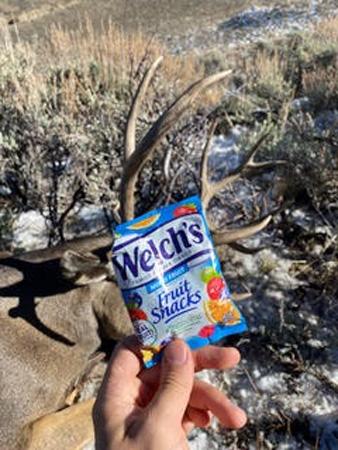
All other photo credits: Garrison Kinsel
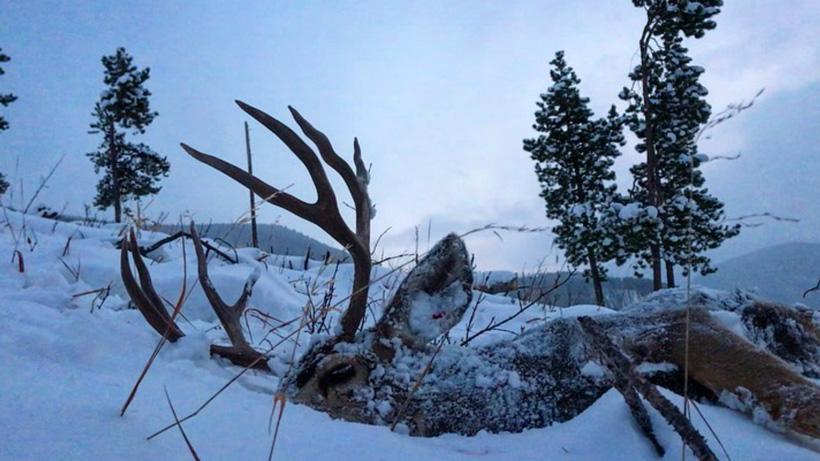
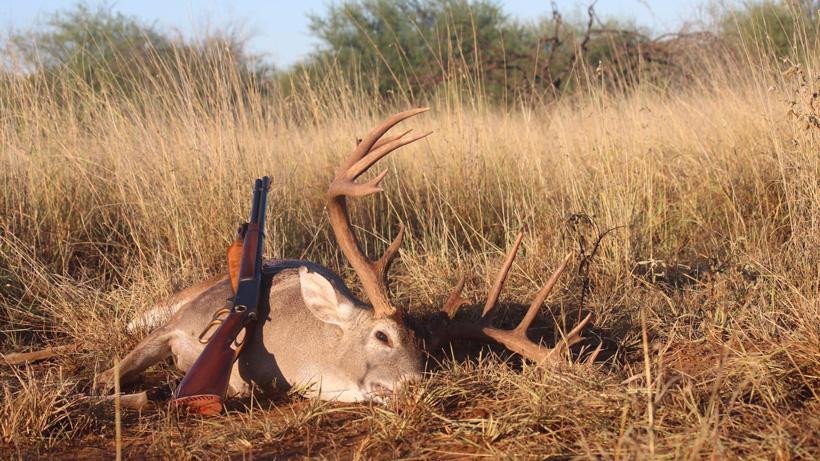
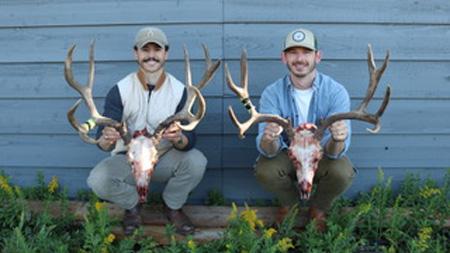
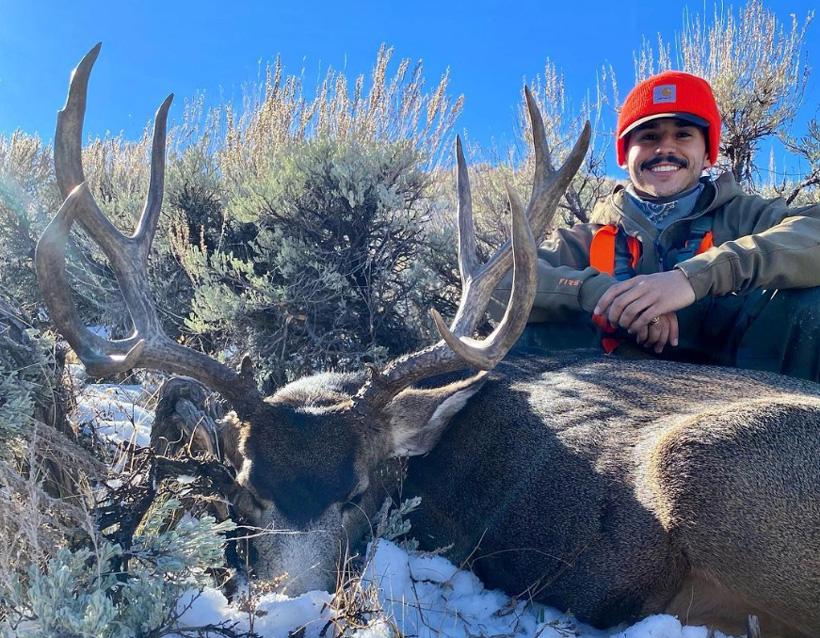
Chris Neville with a late night packout. Photo credit: Luke Dusenbury
As a born-and-raised "whitetail guy," my early perceptions of mule deer hunting saw a lot of back and forth. One day I would think I was a good mule deer hunter because they were just like whitetail, the next I would feel like I knew nothing and that the two species might as well be from different planets. The truth is there are major differences between whitetail and mule deer hunting, but that doesn't mean a good whitetail hunter needs to throw his whole toolkit out the window when taking to the mountains for the first time. Although I will gladly admit to still being a bit of a rookie myself, I've outlined some things that I've learned over the last couple of years of chasing mule deer that do and don't translate well from one domain to the other.
Now before I go any further, I want to add this disclaimer: I know these points won’t apply to everyone. These are merely observations that I’ve made in my own personal transition from the whitetail world to hunting public land mule deer in the mountains. If you’ve killed a big mule deer buck out West while sitting in a tree stand in your Realtree overalls eating a Honeybun, then by all means, keep doing your thing. These are just my two cents.
Although they aren’t very common where I’m from, I do know that deer drives (especially back in the good ole days) have long been a staple of whitetail hunting in North America. Learning how deer will utilize a landscape when pushed can give a hunter and his buddies a good chance at killing a buck on a drive, especially along well-known travel corridors near ridgelines, creek bottoms, saddles, etc. Mule deer do use land features in a similar fashion, especially when spooked, but there are a couple of differences to note when it comes to mountain mule deer bucks.
The first? Topography. By the time the deer that you’ve spooked has made it to a spot they deem safe enough to slow down, they might be two ridges over and well out of your sight/reach. The second? They can cover far more ground than you're probably imagining. A spooked whitetail might make a quick dash out of the area he’s in, then slow down to a stop once he’s hit a good patch of cover. Mule deer, on the other hand, will keep going and going and going…until they’re gone. Lastly, older mule deer bucks don’t usually spook like you think they will. Instead, a mature mule deer buck will take a back-door route that keeps him covered and out of sight, often in thick stands of aspen, juniper or dark timber. So, as appealing as it may seem in some scenarios, try to avoid drives as a primary tactic. If you’ve had success with them back home, that’s great, but I can almost guarantee it’s nothing like what you’re used to.
It should come as no surprise that a lot of your favorite clothing from the whitetail woods may not transfer over to the mountains very well. While most whitetail wardrobes emphasize comfort and camouflage, a good western clothing arsenal will focus more on application and durability. Be prepared to leave some of your favorite “trusty ole” pieces at home and be willing to spend money on quality gear. You will never regret being a cheapskate more than when you’re freezing, sweating, or blistering away on a mountain somewhere — all because you bought something cheap just to check the box off your gear list. However, on the flip side, you do not need every piece of gear in the store. I repeat, you do not need every piece of gear in the store. Think practically about the conditions you will find yourself in and find the right gear for that setting. If you’re struggling to determine what that might mean to you and your hunt, take a look at some of the gear list breakdowns on GOHUNT and find one that matches the style of hunt you’re planning. If money is tight, try ranking that list top to bottom and slowly chipping away at it, starting with the must-have pieces first. Final note: This point could also be extended to guns and glass, but that’s a whole other can of worms. Just know that the same principle applies. Be practical about what you need and be honest about the capabilities of what you already have.
All other photo credits: Garrison Kinsel
Now, before you go throwing stones and Cosmic Brownies at me, know that I’m just as big of a fan of the hunting junk food culture as anybody. I still pack fruit snacks and Dots pretzels with me on just about every hunt for a treat in between hiking, glassing, etc. They’re my favorite. The point I’m trying to make here is that your body will be very similar to your truck on your hunts — when it gets to the mountains, it will have to work a little harder, so give it the fuel it needs! Pick a couple of junky items for a pick-me-up if you need them, but know that what you put in your body will have a direct impact on your physical capabilities and energy levels, which are often a big determining factor in success. The biggest thing that I cannot stress enough is to hydrate! Keep the fluids going as much as possible. Personally, I don’t focus much on hydrating when I’m whitetail hunting, largely because I don’t want to leave the stand to pee. The difference here is that my body isn’t demanding anything more of me, so taking a single water bottle to the stand for the day might suffice. That’s not the case in the mountains. Hydrate before, during, and after everything you do. You’ll need it.
I’ll make this one short because I'm primarily speaking to rifle hunters here: Guys, just don’t. Please. I've seen this way too often in my last couple of years hunting mule deer, especially in Colorado. Leave the Ameristep at home and sit under a tree or behind a bush if you need a good ambush, but don’t get yourself stuck in a blind. Even with good intentions, setting up a pop-up is usually just a death wish for flexibility. It will tie you down to an area and make you lazy. It’s good to be still, it’s good to take cover, and it’s even better to hold idle in a spot long enough to really analyze the whole landscape, but when it’s time to move on, you need to move on. With the exception of some areas (like desert climates where water sources might be a good focal point), you’re going to be better off on your feet than on a stool inside a pop-up.
This one is pretty easy to imagine, but it’s definitely worth emphasizing for any whitetail hunter who hasn’t put their hands on a mountain mule deer yet. Before you go making plans on where you’re going to kill a buck and what you’re going to do with the meat, you need to understand the scale you’re working with, especially if you’re solo. I’m from south Texas. Despite the great genetics we are known for, a big whitetail buck down here may only tip the scale at around 150 to 160 lbs. This made for a pretty rude awakening on the night I shot my first mountain mule deer. I had climbed up into some pretty steep country in the middle of a snowstorm in late October and shot the buck just before dark. The snow, the incline, and the deadfall all made for a pretty rough pack-out, but nothing made it more difficult than my gross underestimation of this buck’s body size. Up until I threw my pack on, I fully expected to be back at my truck by 9:00 or 10:00 PM, knowing it only took me about an hour or two to get up there. In reality, I didn’t make it back until 1:30 AM because of how slow I was moving. To make things worse, I didn’t even have enough cooler space for all the meat once I got there (thankfully, it was 5 degrees, and the town wasn't far). The lesson to be learned here is to be smarter than I was and prepare yourself. These aren’t your average whitetail bodies.
Many whitetail guys I know have very calculated approaches to how they access their hunting areas. They only move at certain hours, always mind the wind and pay close attention to their surroundings when entering/exiting an area. When it comes to mule deer, though, it seems like most whitetail guys kick these cautions to the curb. Don’t. Mule deer are a lot like whitetail in that they can live in the most unsuspecting places and often hide in plain sight. I know you’re probably anxious and excited to get to the pin you dropped on your map, but keep your eyes peeled and pay attention to how you’re moving in the woods. This brings me to my next point: the wind.
Looking out over a large landscape with all kinds of topography, you might be tempted to think that watching the wind is a waste of your time, especially if you’re used to hunting relatively flat ground and farmland country where wind directions are often more consistent and obvious. However, I would happily argue that it might be even more important out West than it is in most whitetail settings. Why? Well, think about it this way: When a whitetail buck busts me with his nose, he’s often within some range to give me an indication that he was at least there (or trying to be). Even if he isn’t close, it’s likely that I already have him on camera, or I will sometime later on after I’ve blown him out. I may have missed that opportunity, but I know he’s there, and I’ll live to fight another day. On the flip side, when I blow out a basin that I haven’t even had a chance to look into, there’s a good chance that I just missed out on some deer… and I’ll never know it. That could be the difference between me revisiting an area or crossing it off my list, never to return. Yes, the wind can be a little harder to read in the mountains than in the crop fields, but just because it’s fickle doesn’t mean you can ignore it. Do some research on thermals and how to read wind in the mountains, and I promise you’ll be better off for it.
This is one of those things that would seem like an obvious translation, but I’ve found by watching other hunters that it clearly isn’t. First and last light are crucial. Treat that pin on your map just like you would your tree stand or popup blind: slip in and out in the dark, get there early, and always be ready at the very first and very last light. Like I said above: you’ll never know what you missed if you blow it out with the wrong wind. In this case, you’ll never know what you could’ve seen if you had stuck around a little later or showed up 15 minutes earlier. Don’t think about what time you need to get back to camp to get dinner ready by 8:00 or what time you need to set your alarm in the morning if you want to get X hours of sleep. In the mornings, work backwards. Set a time that you need to be at your destination and let that dictate what time you get up, always giving yourself plenty of cushion. In the evenings, suck it up and hike in the dark if you need to. You’ve already gone to the trouble of getting this far, why would you short yourself out of the best hours (or minutes) of the day. Get there early and stay late every day, no exceptions.
Like it or not, this is something I have found to be consistently true through both whitetail and mule deer hunting: The weather will often dictate your odds of success. The best thing you can do is know what certain weather patterns will do to the deer in your area and be prepared to make moves when it changes. In 2020, I used this approach to my advantage when hunting a whitetail buck I had been watching for a couple of years that we named “Judge.” Knowing his early season inconsistencies over the years, I chose to wait him out and not make a single move into his core area until the first major cold front of the year (which would also put the wind in my favor). Just after Thanksgiving, the front hit, the winds switched, and I made my move. Sitting on my butt in some thick brush under a huisache tree, I killed my biggest buck ever after listening to him fight another buck in the dark for over half an hour. Moral of the story: I waited for the weather to make him move before I made my move. Without that front, I seriously doubt I would’ve caught Judge on his feet during the daylight. Most avid whitetail hunters know the importance of being in the right place when certain weather systems hit. The mule deer world is no different. Weather is a huge determinant of success. Don’t let crummy weather keep you in camp or the motel room. When Mother Nature calls, get out there and capitalize.
This one is tough, and I’ll be the first to admit that I’m far from mastering it, but I can tell you it’s extremely important in both settings. If you’re headed out West for one of your first big mule deer hunts, believe me, I know you’re jacked up. I know you’re ready to hit it hard, I know you’ve probably watched all kinds of YouTube videos and changed up your fitness routine so you can run all over the mountains like a madman, but there is a time to press play and move and a time to press pause and be still. Learning to balance the two will tremendously improve your odds of success. If you’re anything like me, sometimes pressing pause when you don’t immediately find what you’re looking for might make you a little itchy, but in those moments, consider this: Would you be more upset with missing out on a buck that might be in another basin a mile away or missing out on the one you overlooked that’s right under your nose? Take the time to glass and observe an area thoroughly before moving on. Understand that your eyes need time to adjust to what you’re looking at. Sometimes, it’s good even to take a break after a couple of scans through the binos, have a snack or some water, then scan again. I can’t tell you how many deer I’ve found on second and third passes over an area. Hunt hard, but be patient even harder (if that makes any sense).
Hot tip here: Look smaller. One thing I think a lot of guys stumble on is adjusting their eyes to scale when looking across large landscapes. If you don’t see any deer at first glance over a spot, try looking smaller and holding your glass still a little longer. Find something to use as a size reference (trees, sagebrush, etc.), and imagine in your head what size a deer would be relative to that. Personally, I often find deer on a far hillside and think, “Wow, that’s way smaller than what I was looking for.”
You might think that I’d include this point last as the cute, cliché bow to wrap this whole thing up, but that couldn't be further from the truth. The truth is that this point is the glue that binds all of these other principles together. If you don’t truly believe this at your core, you will fail to execute on all the other high points properly. If you do nothing else with these tips, read this one over until your eyes hurt.
I’m often confused by how quickly some eastern whitetail guys get discouraged when they don’t find what they’re looking for out West. These are the same guys who will spend days on end in a stand, sometimes doing all-day sits, without a single sighting of their target buck, and keep repeating it until it works. Why? Because they know all it takes is that one moment. One good morning, one hot doe, one shot at last light, and bam! You're a hero. Believe it or not, the same is true in the mountains. You’ll get tired, you’ll get discouraged, and you’ll go a day or two without seeing anything appealing and start thinking about going home or hiking down early. It happens. When you start to get in that head space in the mountains, though, try thinking back on your last whitetail harvest. I’d be willing to bet that from sighting to shot, it all unfolded pretty quick. Maybe even in a moment without any sign of hope. Keep your chin up and your head on a swivel until the whistle blows. If and when an opportunity presents itself, you need to be ready.
In closing, remember that all transitions take time. If you’re a whitetail guy looking to get into the mule deer game, you shouldn’t go in expecting to knock it out of the park instantly but don’t throw away your whole tool kit either. Yes, mule deer are a different beast, but a lot of the same skills and understandings you may already have can be useful if you’re paying attention. The final thing I’ll add: Don’t be scared to get your butt kicked. There’s a lot of beauty in the struggle, and you shouldn’t be afraid of learning. Best of luck this season!